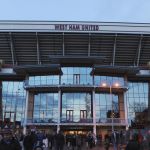
House of Sports: Upton Park
The old Hammers' home, where "Forever Blowing Bubbles" will resound in eternity
February 8th, 2017
Upton Park has been West Ham United’s home for more than a century between 1904 and 2016. The stadium is also known as Boleyn Ground, being built next to Boleyn Castle, which in 1500 hosted Ann Boleyn. The Upton Park has been a monument of London’s football, mainly because of its connection with the team and then for its extraordinary visual impact, especially on the front.
The majestic towers, for example, are a clear reference to Boleyn Castle and they are a determinant peculiarity in stadium aesthetic impact. At the beginning of this season, as we know, Upton Park has been abandoned by West Ham, which now plays his home games at the monumental Olympic Park, a marvelous architectural work, judges as even better than Wembley. This move, though, caused a fracture inside of Hammers’ supporters, which has always been very bonded with the old stadium.
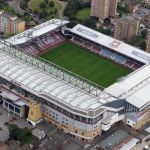
In the early 1900s, West Ham was known as Thames Ironworks FC, an English team born at the recreation club (as it was used to be) of a transport an ironwork company managed by Arnold Hills. In its first years, the team played home games in multiple stadiums, all considered unsuitable, until the construction of Memorial Ground, paid by Hills in 1897. However, Hills had huge difficulties in maintaining the rental of the ground on which Memorial Ground was built, and so he decided for a compromise: he reached an agreement with the catholic institutions for using a big plot of land, owned by the London Catholic School. So, in 1904, the Boleyn Ground was built in the East Ham district, four years earlier the club was dissolved and then re-founded with the name of West Ham United FC.
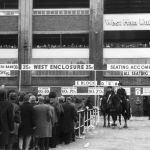
During the very first season the stadium was called “The Castle", and in that same year, it was decided that the club crest should’ve been a castle, and that’s help to understand the deep connection between West Ham and the Boleyn Ground. However, in 1905, because of being so close to the Boleyn Castle, the name was changed. The first game ever to be played at Upton Park was a derby against Millwall, won 3-0 by West Ham with a triple by Billy Bridgeman.
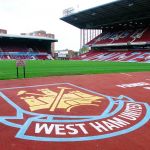
The most important section of the Boleyn Ground is the Bobby Moore Stand, built in 1993, which hosts 9,300 people, all seated after the Hillsborough tragedy. The lower section, actually, was opened almost two months earlier. There has never been a doubt about who name this section after, Bobby Moore was a legend of Hammers’ defense for 16 long years, and he died in the same year the south stand was built. Many pubs on Green Street, near Upton Park, also has his name. The Bobby Moore Stand is the hottest zone area of the Boleyn Ground, especially the lower section, where was always sang out the hymn of the club, along with hundreds of bubbles, blown in all the stadium. In fact, it's called Forever Blowing Bubbles.
The other particular sector of the Boleyn Ground is Sir Trevor Brooking Stand, dedicated to another West Ham player. The north stand hosts 6000 people and it was the first section of English football to feature spotlights to enlighten the pitch in 1953. The East Stand and the Betway Stand complete the stadium, which can host 35.016 seats, almost the half of West Ham’s current structure.
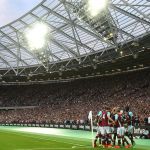
In its history, Upton Park hasn’t hosted just West Ham’s home games. For a brief period also Charlton Athletic played his home games there, because of bureaucratic matters with “The Valley”. In 2012, Upton Park became the first football stadium to host a box match, in this case between Haye and Chisora. Right now, Boleyn Ground is being demolished and the terrain will become a massive house complex called “Boleyn Gardens”, which will probably host the richest and wealthiest people in London.
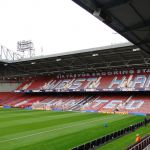
Hammers supporters still haven’t swallowed the change of stadium and, with a classic touch of superstition, they impute the worst beginning of the last 50 season - ended with the transfer of Dimitri Payet - to the new stadium. Upton Park was a forge of English football’s story and no one who respects football would be happy seeing its demolition. But with a bit of reason, we can easily admit that the Olympic Park is a stunning masterpiece, which in time will be filled with stories, unforgettable goals and games to remember. Because deep down, we all know that West Ham will be always destined to write English football’s history.












